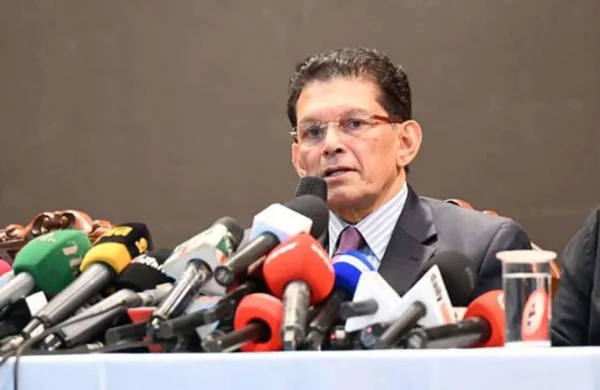Country wakes up to fault line reality
- Update Time : Saturday, November 22, 2025

Staff Correspondent:
An earthquake measuring 5.7 on the Richter scale shook Dhaka as well as different parts of the country at 10:28am on Friday, awakening people to the country’s location, especially the capital’s, along a crucial tectonic line.
Historically, this region has not witnessed any earthquake with a magnitude over 6 since 1950, but experts call for enhanced measures to prevent damage if any bigger earthquake occurs along the fault line in the future.
Ten deaths caused by the tremor were reported till 10:30pm.
The Bangladesh Meteorological Department (BMD) said the epicentre of the quake, classified as “moderate”, was located in Madhabdi in Narsingdi, Dhaka, at a latitude of 23.77°N and longitude 90.51°E.
The depth of the earthquake was recorded at 10 kilometres, according to BMD.
The United States Geological Survey (USGS) reported that the earthquake was of magnitude 5.5 on the Richter scale and located 14km WSW of Narsingdi, Bangladesh. The earthquake occurred in central Bangladesh, approximately 25km from the capital city of Dhaka.
The earthquake’s epicentre at Madhabdi was approximately 40km from Dhaka, according to the Bangladesh Red Crescent Society (BDRCS).
Tremors were felt across a wide area, including Narayanganj, Chandpur, Sirajganj, Sitakunda, Nilphamari, Bogura, Barishal, Patuakhali, and Moulvibazar, it said.
Prof Syed Humayun Akhtar, an earthquake specialist, and retired Dhaka University geologist, told the journalists that this area sits on the interaction zone between the Indian Plate and the Burma Plate, a region known as a subduction zone, where one plate dives beneath another.
The latest tremor indicates movement along the Indo-Burma subduction zone, specifically at the edge of a locked segment, he said.
Although northern and southeastern Bangladesh are seismically active regions due to interactions between the Indian and Eurasian plates, the central regions where Friday’s earthquake occurred are more seismically quiescent. Since 1950, only 14 previous earthquakes of magnitude 5.5 or larger, including two magnitude 6 earthquakes, have occurred within 250km of that region, said the USGS.
EXPERT CONSIDERS TREMOR ‘WAKE-UP CALL’
Mehedi Hasan Ansari, a professor at Buet’s Civil Engineering Department, told the Journaliststhat Bangladesh and its surrounding areas have experienced six major earthquakes over the past 150 years.
“Among them were the 1869 earthquake of magnitude 7.6, the 1825 earthquake of magnitude 7.1, the 1897 Great Indian Earthquake of magnitude 8.1 – which is considered one of the largest earthquakes in the world, the 1918 Sreemangal earthquake of magnitude 7.6, and the 1930 Dhubri earthquake of magnitude 7.1,” he said.
“If we observe these historically, earthquakes of magnitude 7 tend to recur roughly every 100-125 years, while extremely large earthquakes like the 8.1 magnitude event of 1897 have a recurrence period of 250-300 years,” he said.
“Since 1930, we have not experienced a major earthquake in the region, but historical data show that such large earthquakes remain possible here. The earthquake today can be considered one of the smaller quakes that often precede a major seismic event,” said the expert.
“Even though today’s earthquake was only magnitude 5.5, it caused damage to many homes and buildings across Dhaka, including cracks in structures even inside the airport. Residential areas such as Gulshan and Banani reported building damage, especially in multi-story buildings. This is expected if building codes are not properly followed,” he said.
The Buet professor also said there are about 2.1 million homes in Dhaka, of which 1.5 million are one or two-story houses, and around 6 lakh are four stories or higher. Many of these taller buildings need immediate structural inspection. Past incidents, like the 2013 Rana Plaza collapse, which killed over 1,130 people, underline the importance of proper building safety.
“The government should urgently require all buildings to be inspected and certified through RAJUK to ensure they comply with building codes. Today’s earthquake shows why this is critical: even a 5.5-magnitude quake caused significant structural damage, highlighting the vulnerability of Dhaka’s buildings and infrastructure,” he added.












